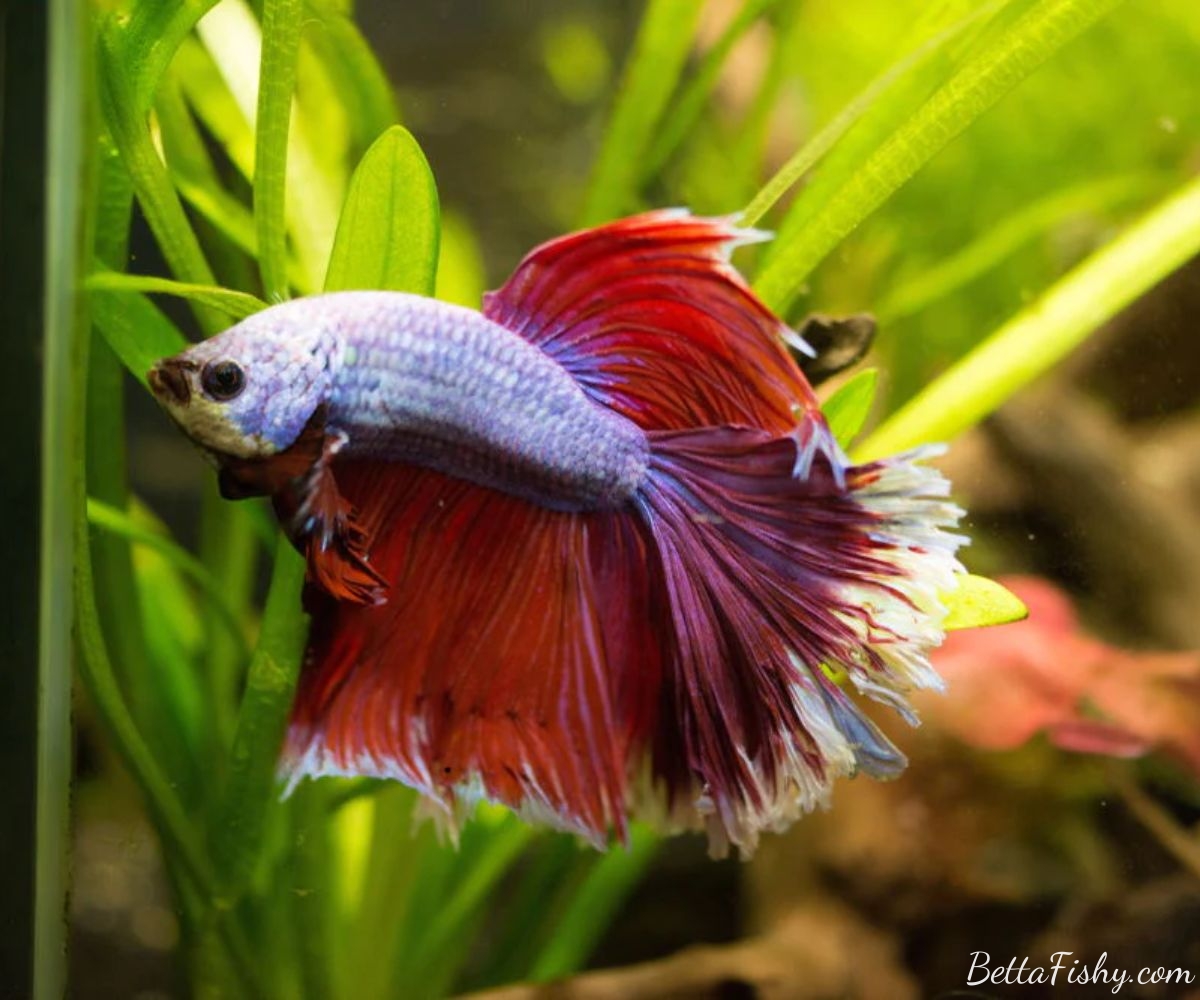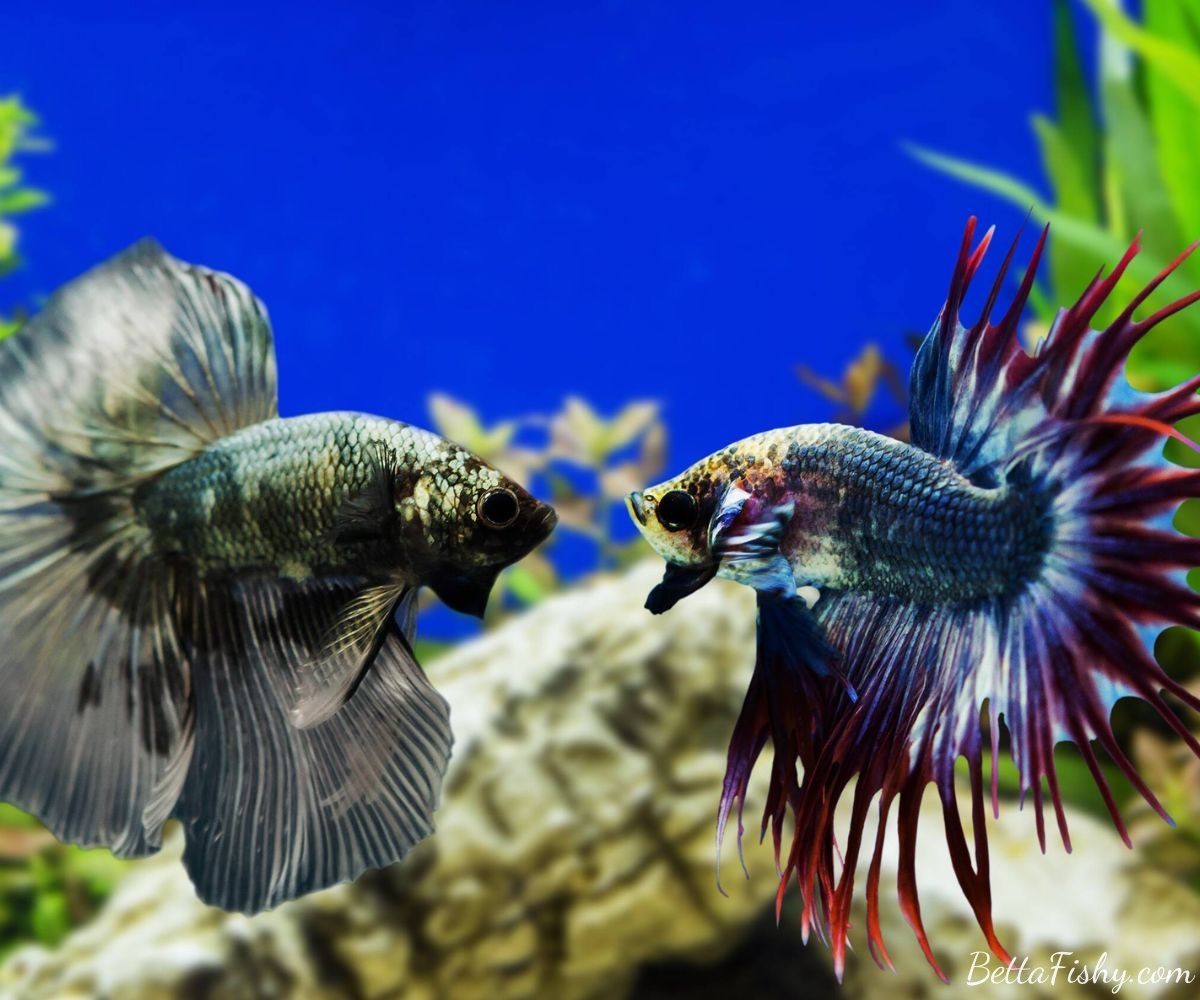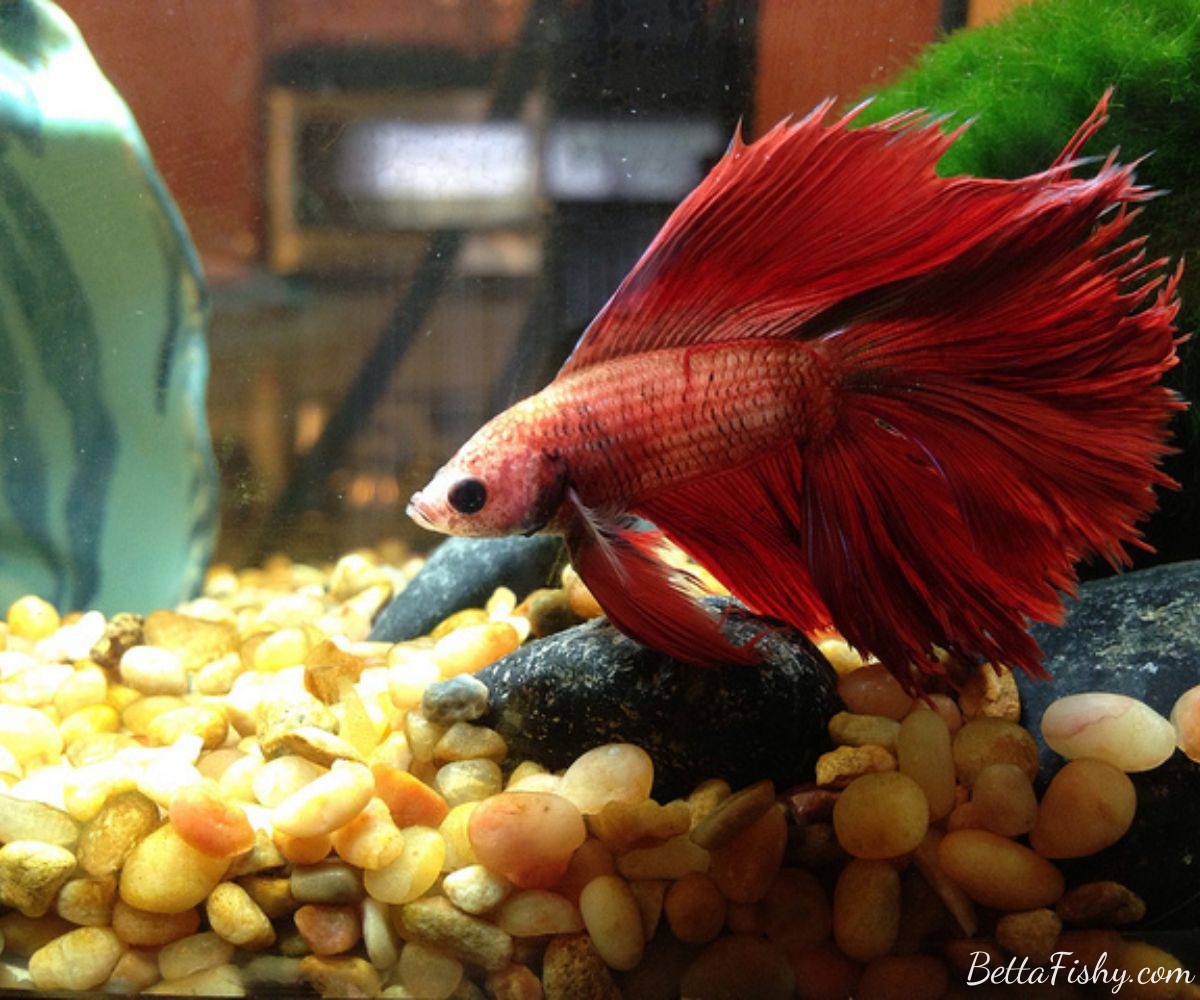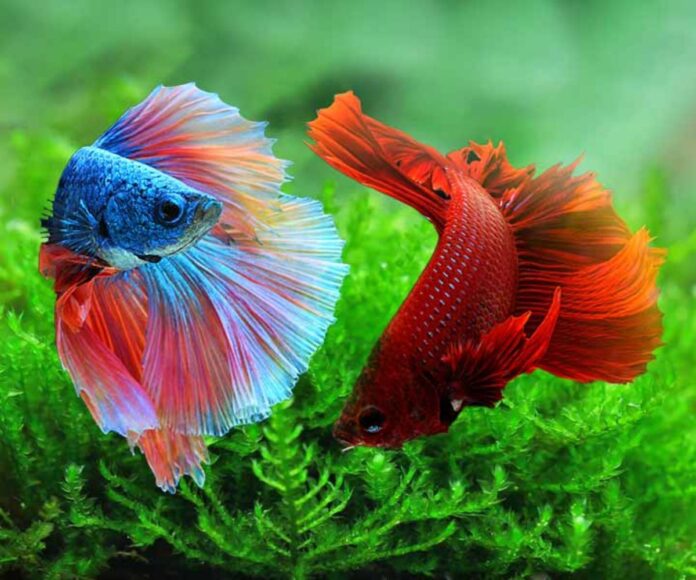Betta fish, known for their vibrant colors and captivating personalities, have become increasingly popular among aquarium enthusiasts. However, understanding their unique behaviors can be a daunting task for new owners. This comprehensive guide delves into the intricacies of betta behavior and normal betta behavior, offering insights into their body language, daily routine, social interactions, and signs of stress or illness. With this knowledge, betta owners can create a thriving environment that caters to the specific needs of these fascinating creatures.
I. Introduction
Betta fish, scientifically classified as Betta splendens, are native to Southeast Asia, predominantly found in Thailand, Cambodia, and Vietnam. These tropical fish are renowned for their territorial and aggressive nature, often leading to the misconception that they are difficult to keep. However, with proper understanding and care, bettas can thrive in home aquariums, exhibiting a wide range of interesting behaviors.
II. Explore the Normal Betta Behavior through Body Language and Posture.

Betta fish may not be able to communicate verbally, but they have their own unique ways of expressing themselves through body language and posturing. By observing these behaviors, owners can gain valuable insights into their betta’s mood and well-being.
Fins
Fins are an essential part of a betta’s body language, and they can tell a lot about how the fish is feeling. Here are some common fin positions and what they mean:
- Spread Fins: Relaxed and content betta fish typically display spread fins, indicating comfort and security. This is the natural position for bettas when they are swimming around their tank.
- Tail Fanning: When a betta is excited or showing off, it may fan its tail repeatedly. This behavior is often seen during feeding time or when a betta is trying to impress a potential mate.
- Fin Clamping: Clamped fins signal stress, fear, or illness. This behavior often accompanies other signs of distress, such as hiding, loss of appetite, or lethargy.
Coloration
Betta fish are known for their vibrant colors, but these colors can also change depending on their mood. Here are some common color changes and what they mean:
- Bright Colors: When a betta is happy and healthy, its colors will be bright and vibrant. This is a good sign that your betta is thriving in its environment.
- Dull Colors: If a betta’s colors appear dull or faded, it could be a sign of stress or illness. This is especially true if the color change is sudden and accompanied by other symptoms.
- Dark Colors: Bettas may darken their colors when they are feeling threatened or aggressive. This is a natural defense mechanism to intimidate potential predators or rivals.
Swim Patterns
Bettas have a unique way of swimming that can also reveal their mood and behavior. Here are some normal betta swimming behaviors and what they mean:
- Darting: If a betta is darting around its tank, it could be a sign of excitement or aggression. This behavior is often seen during feeding time or when a betta is trying to establish dominance.
- Lethargic Swimming: A betta that appears to be swimming slowly or sluggishly could be experiencing stress or illness. It is essential to monitor this behavior and look for other symptoms.
- Glass Surfing: When a betta repeatedly swims along the glass walls of its tank, it could be a sign of boredom or a lack of stimulation. This behavior is more common in smaller tanks or those without enough enrichment activities.
Bubbling
One of the most fascinating behaviors of betta fish is their ability to create bubble nests. These nests are made up of small bubbles that the male betta blows and sticks together using saliva. Bubble nests are not only a sign of a healthy and happy betta, but they also serve as a place for the male to protect his eggs during breeding.
III. Diving into the Daily Routine: Exploring Feeding Habits and Sleep Patterns of Bettas

Betta fish have specific needs when it comes to their daily routine, including feeding and sleep patterns. Understanding these behaviors is crucial in providing proper care for your betta.
Feeding Habits
Bettas are carnivorous fish, meaning they primarily eat meat-based foods. In the wild, they feed on small insects, larvae, and other aquatic creatures. In captivity, bettas can be fed a variety of foods, including pellets, frozen or live foods, and even some vegetables. It is essential to research and provide a balanced diet for your betta to ensure its health and well-being.
Bettas should be fed once or twice a day, with only as much food as they can consume in a few minutes. Overfeeding can lead to health issues such as bloating and constipation, so it is crucial to monitor their intake and adjust accordingly.
Sleep Patterns
Bettas are diurnal animals, meaning they are most active during the day and sleep at night. However, unlike humans, bettas do not have eyelids, so it may be challenging to determine when they are sleeping. Some signs that your betta is sleeping include resting at the bottom of the tank or hiding in plants or decorations.
It is essential to provide a dark and quiet environment for your betta to sleep in. This means turning off any bright lights or loud noises in the room where the tank is located. A consistent sleep schedule is also beneficial for bettas, as it helps them establish a routine and feel more secure in their environment.
IV. Understanding Betta Interaction and Aggression

Betta fish are known for their territorial and aggressive nature, making it crucial to understand how they interact with other fish and humans.
Tank Mates
Bettas are solitary fish and do not typically do well in community tanks. Male bettas, in particular, are known for their aggression towards other male bettas, often resulting in fights that can be fatal. It is essential to research and carefully select tank mates for your betta, keeping in mind their specific needs and behaviors.
Some suitable tank mates for bettas include peaceful fish such as snails, shrimp, and some small species of catfish. It is crucial to monitor the interactions between bettas and their tank mates and be prepared to separate them if necessary.
Interaction with Humans
Betta fish can recognize their owners and may even develop a bond with them over time. They may swim to the front of the tank when their owner approaches or follow their finger along the glass. However, it is essential to remember that bettas are still wild animals and may become stressed or agitated by too much interaction. It is best to limit handling and only do so when necessary, such as during tank maintenance or health checks.
V. Recognizing Signs of Stress and Illness
Despite proper care and attention, betta fish can still experience stress and illness. It is essential to monitor their behavior and appearance for any signs of distress, as early detection can lead to successful treatment.
Physical Symptoms
Physical symptoms of stress and illness in bettas can vary but may include:
- Loss of appetite
- Lethargy or unusual swimming patterns
- Faded or discolored scales
- Inflamed or damaged fins
- Bloating or swelling in the abdomen
- White spots or patches on the body
- Rapid gill movement or gasping at the surface of the water
If you notice any of these symptoms, it is crucial to take action immediately and consult a veterinarian if necessary.
Behavioral Changes
Bettas may also exhibit behavioral changes when they are stressed or ill. Some common behaviors to watch out for include:
- Hiding or staying at the bottom of the tank
- Glass surfing or darting around the tank
- Aggression towards tank mates or humans
- Lack of interest in food or feeding
- Excessive scratching or rubbing against tank decorations
It is essential to pay attention to these changes and address any potential issues as soon as possible.
VI. Creating a Happy and Healthy Betta Environment

To ensure the well-being of your betta, it is crucial to provide a suitable environment that caters to their specific needs. Here are some essential factors to consider when setting up a betta tank:
- Tank Size: Bettas require a minimum of 2.5 gallons of water, but a larger tank is always better. A bigger tank means more space for swimming and exploring, and it also helps maintain water quality.
- Water Quality: Bettas are sensitive to water conditions, so it is crucial to maintain proper filtration and perform regular water changes. The ideal water temperature for bettas is between 76-82°F, and the pH level should be around 7.0.
- Tank Decorations: Bettas enjoy having places to hide and explore, so it is essential to provide plenty of plants, caves, and other decorations in their tank. Live plants not only add visual appeal but also help maintain water quality.
- Enrichment Activities: As mentioned earlier, bettas can become bored and stressed without enough stimulation. Providing enrichment activities such as mirrors, floating toys, and live food can keep them mentally and physically stimulated.
VII. Conclusion
Understanding normal betta behavior is crucial in providing proper care and creating a thriving environment for these fascinating creatures. By decoding their body language, diving into their daily routine, and recognizing signs of stress or illness, betta owners can ensure the well-being of their fish and enjoy their unique personalities to the fullest. With this guide by BettaFishy, you can become a knowledgeable and responsible betta owner, providing your fish with the best possible care.


